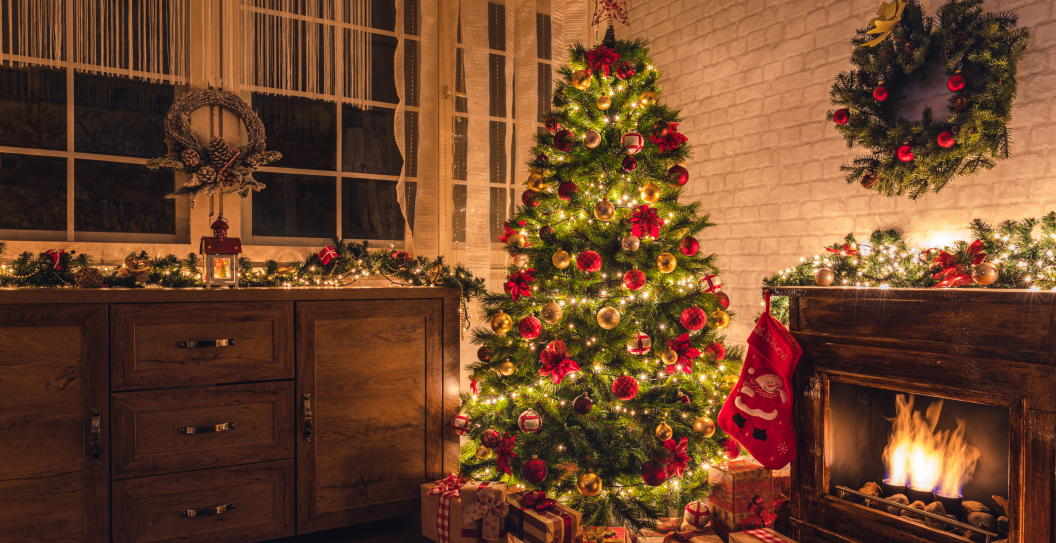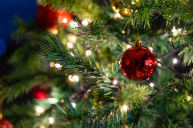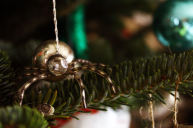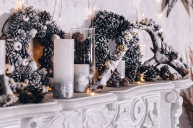My favorite types of Christmas trees have a slight element of chaos. Like the string of half-broken disco balls I wrapped around my first self-purchased Noble Fir. Or the oversized Blue Spruce my fiancè and I had to hack the top off of just to fit it in through the door. To me, throwing any kind of intricate design out the window is part of the holiday fun—but that doesn't mean I don't grow green with envy over the stunning, professionally trimmed trees that fill my Pinterest feed. But how to decorate a Christmas tree like the pros? It's always seemed out of reach.
Videos by Wide Open Country
The color-coordinated ornaments, cheeky themes, and perfectly twinkling lights make my little haphazard tree look like a lopsided Charlie Brown special. But there's a very good reason I haven't attempted to up my decorating game: it's freakin' hard. Even harder than your Christmas mantel decor.
How do you know how many ornaments are too many? Or how to properly drape lights and tinsel so they look effortlessly glamorous instead of tacky and tangled? And is there a trick to getting your tree to look full all the way around, or do interior designers just have some innate talent for it?
Lucky for me (and you), I tapped a few top design minds to share their holiday decorating secrets. Here's how they say you should trim your Christmas tree.
Make a plan
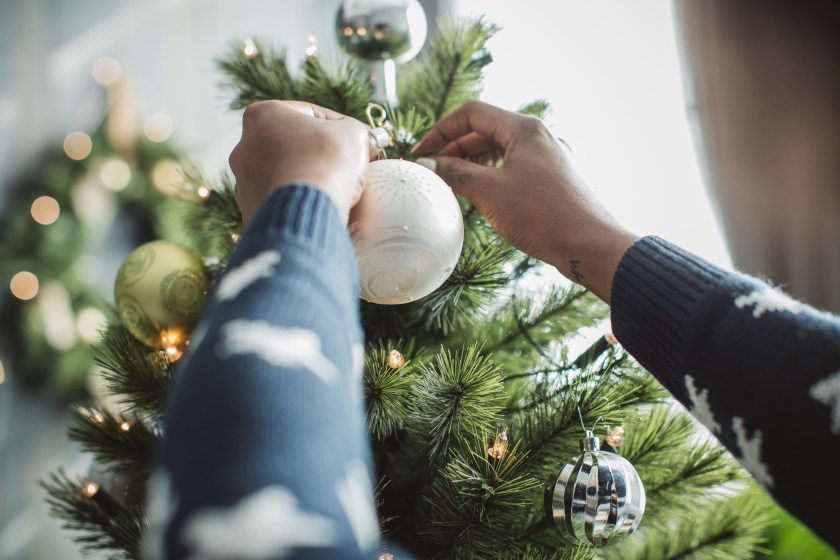
As it turns out, you're not just supposed to start shoving ornaments onto branches willy-nilly. Instead, interior designer and founder of Wreaths.co.uk Tom Yates suggests having a little pre-plan sesh: "For me, it helps to have an overall theme in mind, whether that's simply an overarching color scheme or something more specific, e.g. going a little more rustic or opting for an overall traditional aesthetic.
"I start first with pre-planning tree placement and positioning, and then sketch out the tree and where I want the decorations to 'sit.' I know some may think this is overkill, but it's something I really enjoy doing!"
Lights first

Ornaments may be the star of the show, but they're not the first thing to go on the tree. "Always start with the lights," says Bree Steele, interior designer and trade accounts manager for RJ Living. "Before you decide to hang anything on the tree, test your lights and weave them through the branches from the inside out to create depth and warmth.
"Trust me, it sets the stage for everything else, and it's always a pain to restart if you find out your lights are not working AFTER the rest of the decorations are up."
Avoid ornament overkill
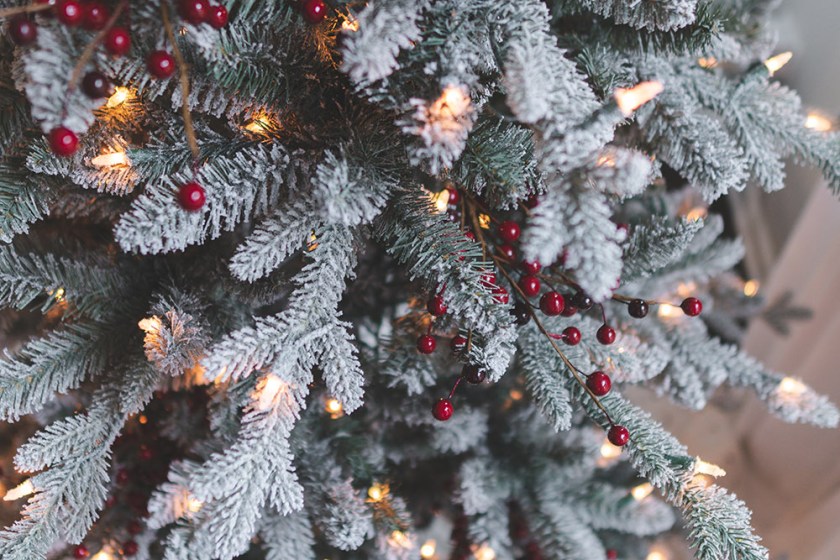
Viv and Tim Home
I know it's tempting to hang every single ornament you've kept stored away, but pretty much every designer I spoke to preached that less is more. Vivianne Chow, interior decorator and founder of home decor blog Viv & Tim Home, recommends sticking to a neutral ornament scheme and sprinkling some red berry picks throughout the branches. It's simple, elegant, and doesn't overwhelm the tree.
Holiday decorator Emily Piepenbrink of Made Merry has an easy rule of thumb to follow: "If you find an ornament you love, buy no less than eight. If you've got a seven-foot tree, and the ornament is relatively large, you're going to need at least eight. If you have a larger tree, add four more for every foot."
Forget symmetry
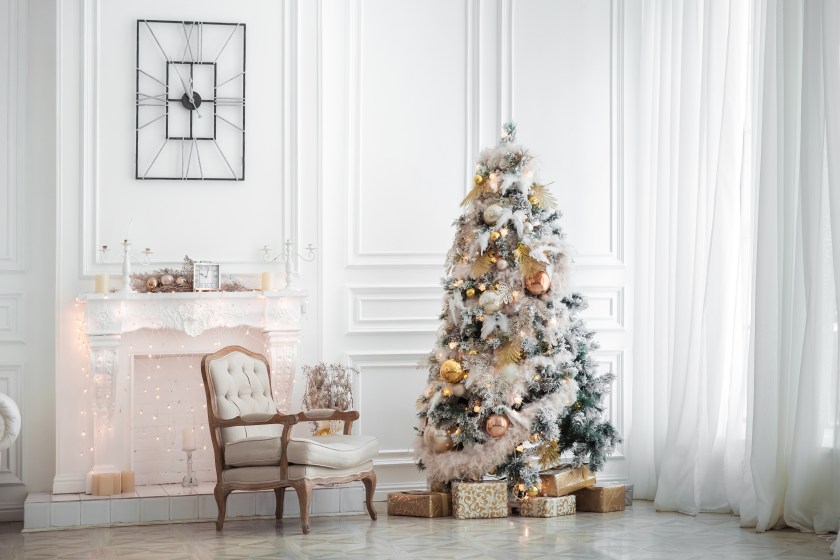
A common tree-trimming mistake? Trying to make everything perfectly symmetrical. It just doesn't work, according to Piepenbrink, so instead, focus on symmetry's chiller, eye-catching cousin: balance.
"Your Christmas tree shouldn't look symmetrical; that will actually make your eyes less interested in it," Piepenbrink says. "Instead, you want to achieve balance. Balance is visually pleasing and makes everything seem more organically placed."
Go Deep
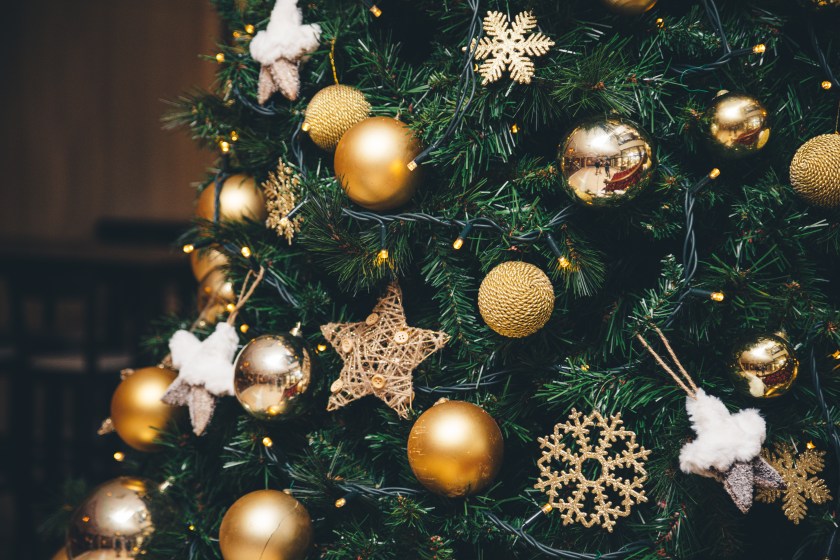
One easy way to make sure your tree is properly balanced is to place ornaments, picks and stems deep into the tree's branches. "One common decorating mistake I see is hanging ornaments only on the edge of the branches," says Chow. "Place ornaments deeper into the tree to create depth and a full look."
Skip the skirt
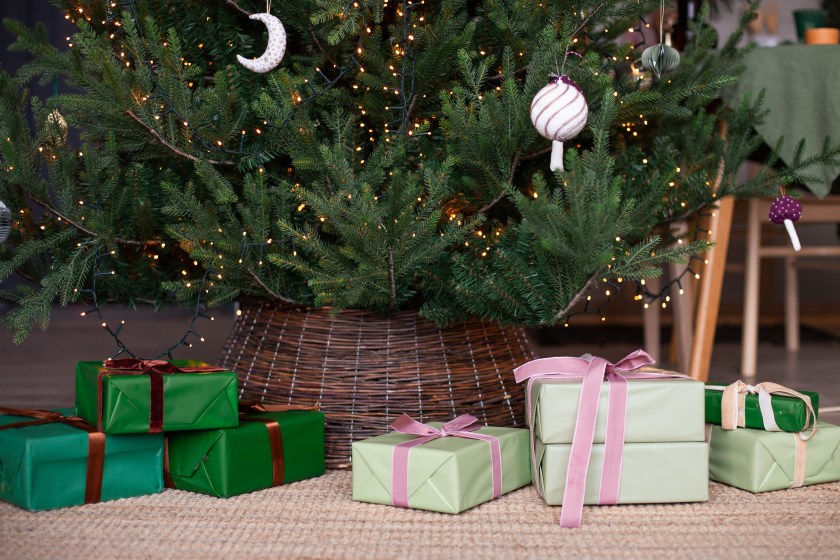
While I'm all for a good, red-and-green plaid tree skirt, there are other, more creative ways to cover up the tree stand. Chow says this year is all about tree collars.
"With Christmas tree collars, you don't have to worry about the tree skirt moving around or inevitably getting messed up from presents below the tree. Tree collars simply cover the tree stand and give a neat and clean look no matter what."
Tell a story
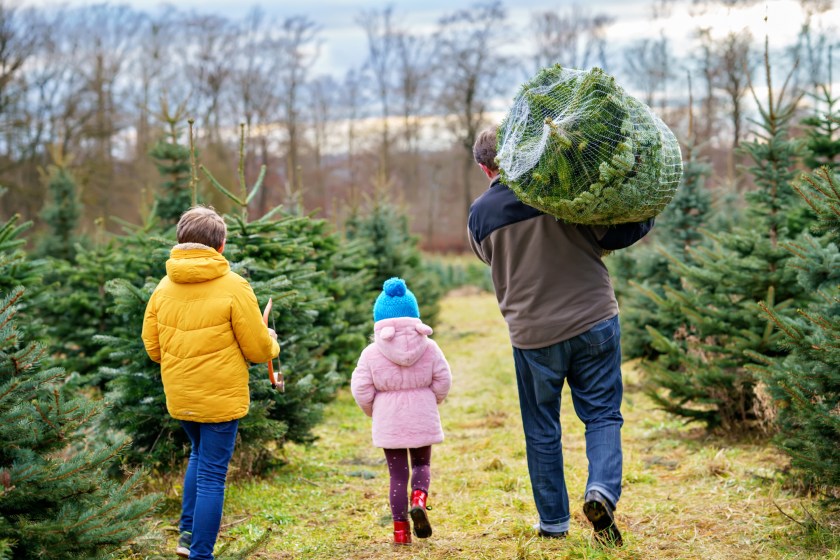
If you really want to get inside the mind of a designer, start thinking of your tree as a story that only you can tell. What moments from your life will it symbolize? What colors and textures can you incorporate to make it feel personal?
Piepenbrink sets up a small forest of seven Christmas trees in her home every year, and each one gets its own story. "The tree in my husband's office is themed for the Black Forest; it's full of deep greens, pinecones and natural touches, and a host of cuckoo clocks. Other themes this year include Owl's Nest, Books & Bells, and Big Party Energy."
Reuse old ornaments
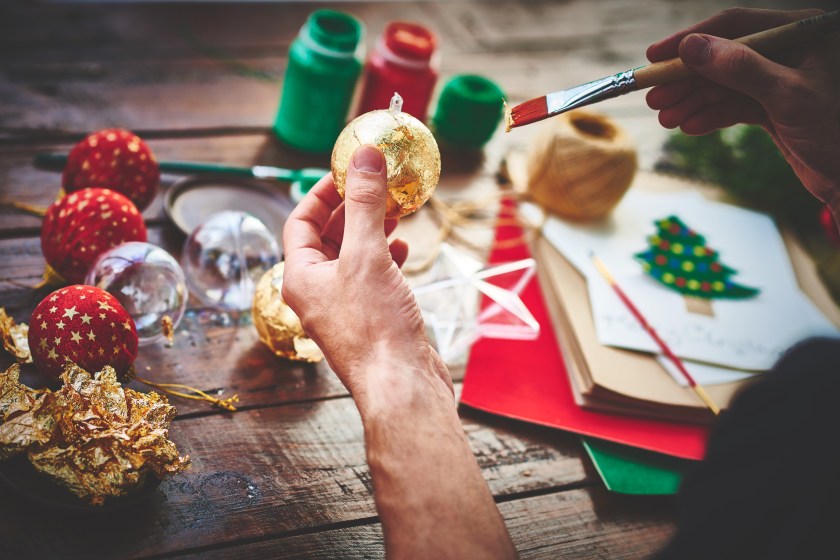
Steele embraces the art of storytelling by finding the balance between "festive vibes and personal expression."
"I always start with a vision. Is this year's tree going to whisper the elegance of a snowy Christmas in the countryside, or will it shout with the vibrant colors of celebration? I take inspiration from the year gone by, places I've visited, design trends I've loved, stories my clients have told, and memories my loved ones have shared."
Her favorite personalization hack? Reuse those fill-your-own baubles every year with new items inside. "The very act of filling them up signifies what the holiday season is all about—personal connections, celebrations, and pure joy."
Make it personal
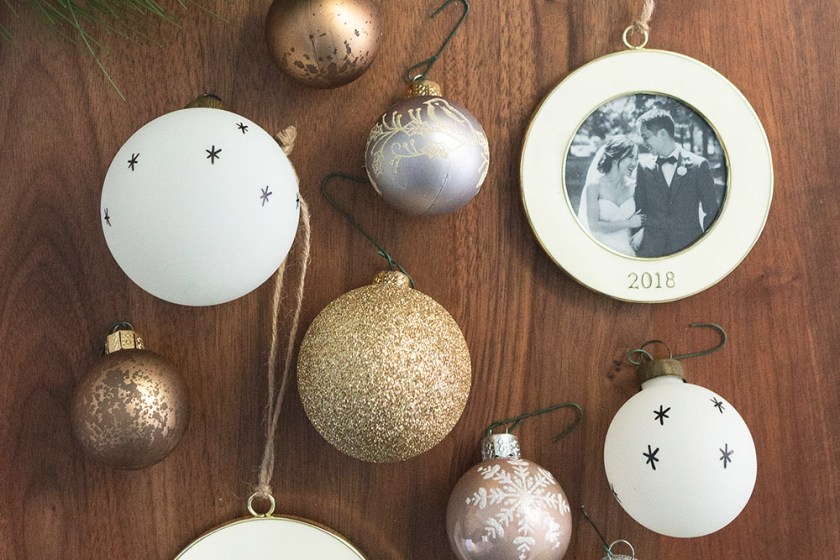
Viv and Tim Home
Unless you're decorating for an office setting or someone else, your Christmas tree should still be, well, your Christmas tree. Decorating like a designer doesn't mean forgoing all your personal touches—and there are so many ways to incorporate them tastefully.
"I started a tradition of using these yearly dated Pottery Barn ornaments to commemorate our highlight of that year to remember," says Chow. "It's so rewarding to look back on past memories and hang up a new favorite memory each year!"
Think outside the box
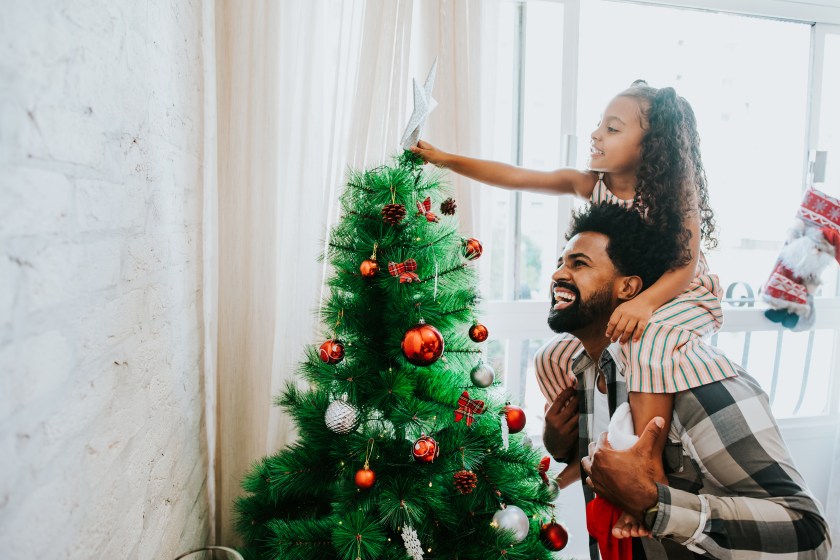
Piepenbrink, on the other hand, is loving how everyone is embracing the idea that literally anything can be an ornament if you get creative enough: "Have a collection of books that you love? Put them on the tree! Have dried hydrangea stems hanging around? Put them on the tree! Color palettes will come and go, but creating a tree that's full of what you have and love is timeless."
